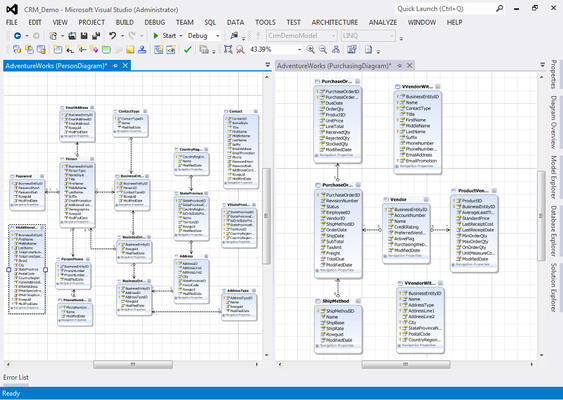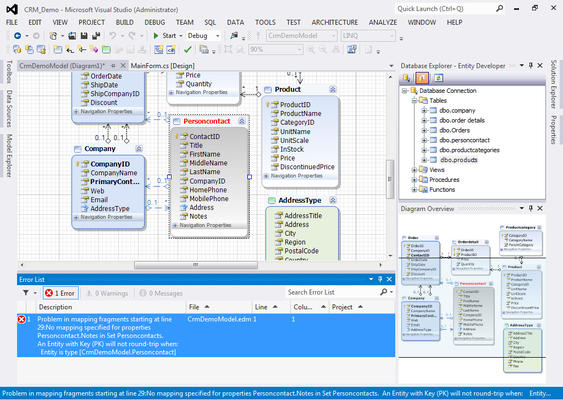Entity Developer
Leistungsstarkes Tool für Entity Framework, EF Core, NHibernate und LINQ to SQL.
Veröffentlicht von Devart
Wird von ComponentSource seit 2005 vertrieben
Preise ab: $ 313.55 Version: 7.2.10 Letzte Aktualisierung: Jan 17, 2024
Entity Developer seamlessly integrates with Visual Studio 2012. You may edit your Entity Developer models as Visual Studio documents. Entity Developer toolbars and tool windows behave as native Visual Studio toolbars and tool windows, all Entity Developer functionality is available from the Visual Studio menu.

Bild 1 / 2
With Entity Developer you don't need to limit yourself in choosing a design approach – Model-First, Database-First or mixed – Entity Developer supports any of them. With Update to Database and Update from Database wizards you can easily synchronize your model and database in any direction. For example, you may generate model from the database, then edit it, and apply these changes to the database with Update to Database Wizard. When updating a database, Entity Developer makes only necessary changes to the existing model database and retains the data if possible. The database does not need to be re-created.

Bild 1 / 2
Entity Developer allows viewing and editing data of tables, views, and model entities, create and execute LINQ to SQL, Entity SQL, and HQL queries against the model, eliminating the need for additional applications and reducing time for accessing these operations.

Bild 1 / 4
Using Entity Developer, you can fine-tune the code generation process according to particular needs by flexibly using different types of new templates that are shipped with the application. You can customize code generation settings for existing templates and even create your own ones.

Bild 1 / 2
Entity Developer provides optimized performance and convenient work with large models on all stages of development. When generating a model for a database, Entity Developer uses highly optimized metadata retrieving. All database tables are retrieved with their column metadata, reducing the number of server calls and metadata retrieving duration. Large models can be split into several thematic diagrams, each one having a part of model entities.


Entity Developer always validates your model while you are editing it. All errors and warnings automatically appear in the Error List window. Error list displays error or warning message and its location. You can easily navigate to the object that caused an error by double-clicking it in the Error List window. Thus you may find and fix model errors quickly and conveniently.

